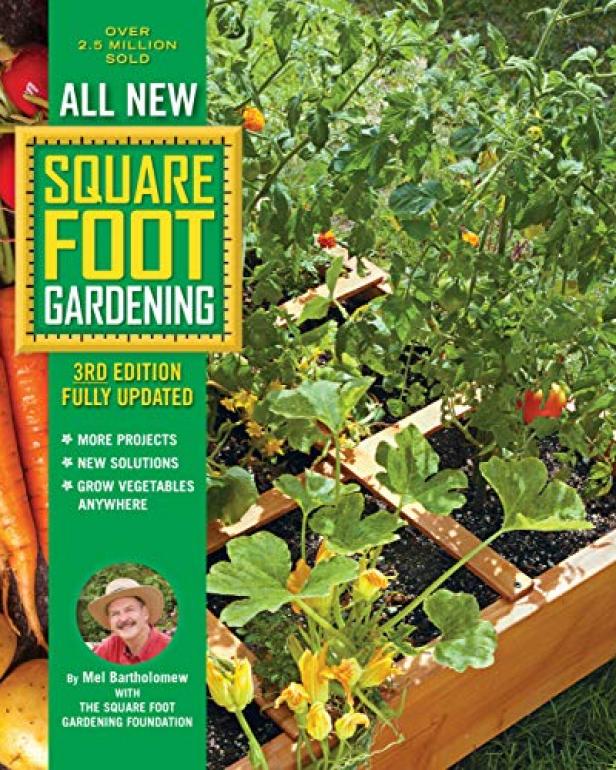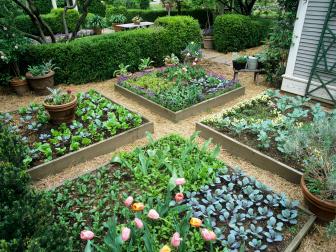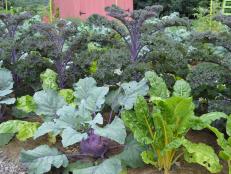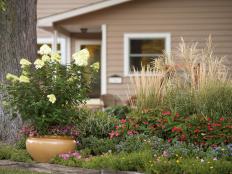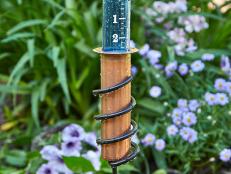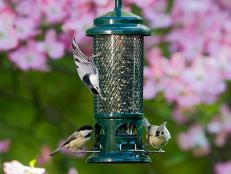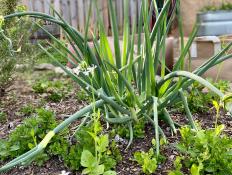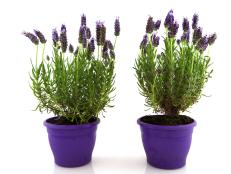All About Square Foot Gardening
Learn the pros, cons and tips for exploring this beginner-friendly gardening method.
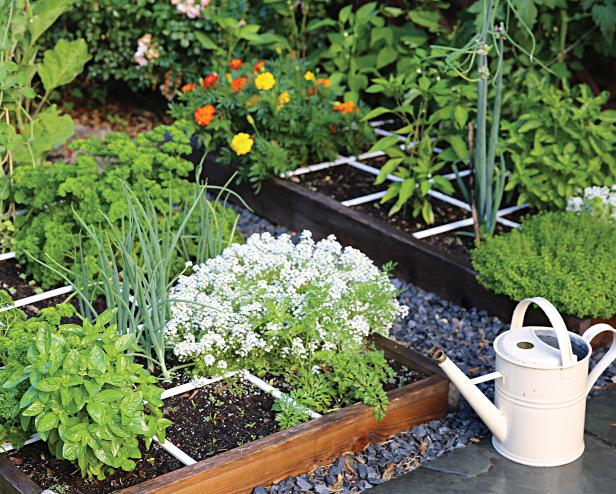
Square Foot Gardening Foundation

Home gardening can be daunting to newcomers, with scientific jargon as thick as summer weeds. The complexities of navigating nature to grow food are impossible to escape, but they become more intuitive with practice. While awaiting that intuition, it helps to start with a clearly structured plan.
Many gardening techniques tout simplicity along with decreased waste, easier work and bountiful harvests. Square Foot Gardening is one such method, with an impressive track record of adoption. The gridded raised bed system has inspired thousands of new gardeners to try their hands at growing food. SFG was popularized by retired engineer-turned-hobby gardener Mel Bartholomew, who published his first book, Square Foot Gardening, in 1981. He starred in a PBS and Discovery Channel television series of the same name. The popular text is now in its third edition: All New Square Foot Gardening.
Read on to learn the philosophy behind this beginner-friendly method, some pros and cons of the practice, how to start a square foot garden and suggestions for additional methods to explore. Whether you glean a few tips or implement it full-scale, SFG is an encouraging, pragmatic body of resources to help you enjoy surprising abundance from your little corner (or, square) of Earth.
What is Square Foot Gardening?
SFG is a digestible, easy-to-learn method of home gardening that aims to simplify and reduce waste, promising greater efficiency, easier work and higher productivity. This technique helps gardeners learn a more intensive way of spacing plants, using wooden raised beds that are segmented into 1’x1’ squares by an overlaid wooden grid. It compartmentalizes the planting process, helping gardeners maximize space by working inch by inch, square by square. Evolving through the seasons, each square is planted with a different vegetable, fruit, herb or flower.
By growing a variety of plants in one bed, gardeners reap larger, more varied harvests while weeding and watering less frequently (compared to conventional row gardening). Bartholomew’s recommended soil mix is designed to provide natural nutrition, eliminating synthetic inputs.
A now international phenomenon, SFG is also referred to as Square Metre Gardening. The Square Foot Gardening Foundation estimates that the method "costs 50 percent less, uses 20 percent less space, 10 percent of the water, and only 2 percent of the work compared to single-row gardening."
It is important to consider the metrics behind these success claims. The resourcefulness and abundance of SFG is measured against conventional row gardening, which may have been standard in the 70s, 80s and 90s, but is not necessarily the current standard for backyard gardening. Today, we have a wealth of resources on raised bed gardening in small spaces without chemical inputs, prioritizing sustainability and efficiency.
Tips for a Raised Bed Vegetable Garden
Raised bed vegetable gardening takes very little space and allows vegetables to be grown closer together. Discover how to make the best use of your raised beds.
So it’s worth asking, does SFG hold up as a uniquely effective technique when measured against other approaches to organic raised bed gardening? Where does it shine, and where does it fall short?
Pros to Square Foot Gardening
If you are new to the vegetable garden game, this method is a great place to start. SFG is like riding a bike with training wheels — it offers reassuring boundaries and a sense of confidence. When broken down into even squares, the tasks of planning, planting, harvesting and caring for a garden are made to feel more manageable.
Just as there are many ways people learn in school, there are infinite ways to practice gardening. Which techniques resonate most with your learning style and aesthetic differs — there’s no single right way. For those who think and learn in a linear, systems-oriented fashion, SFG may be appealing. It is a way of approaching nature’s unknowns with a clear action plan and an orderly set of boxes to check.
The SFG resources are champions for chemical-free gardening, providing alternatives to applying products that harm pollinators, our water supply and our health. The SFG method has undoubtedly made an impact by steering home gardeners away from the unnecessary and uninformed application of synthetic fertilizers, pesticides and herbicides.
Cons to Square Foot Gardening
While certain learning styles and aesthetics gravitate towards the tidy boxes of SFG, others may find the gridded raised beds creatively constraining or unsightly. Particularly for artistic gardeners who prefer to follow nature’s forms, perfect squares may feel rigidly counterintuitive.
Grid planting may be space-efficient, but it does not automatically equate to bountiful gardening. SFG does not address well-studied concepts like intercropping and companion planting, which highlight plant partnerships that are proven to be beneficial (or antagonistic).
Companion Planting in Your Vegetable Garden 16 Photos
Find detailed info and links for specific companion plants and planting techniques for popular vegetable garden crops in our alphabetical list, from beets to zucchini.
While utilizing every square inch is sound advice, gardening well in close quarters is bolstered by the knowledge of which plants cohabitate most happily. SFG could be enhanced by the inclusion of companion planting — which looks at symbiotic plant partnerships — and intercropping — which strategizes plant combinations based on harvest timing, root depth and resource use.
The technique also claims that a depth of 6 inches is sufficient for all crops, but such shallow planting may not provide ample space for root development or drainage. In urban gardens, deeper raised beds create a buffer between food crops and potential heavy metal contamination in native soil. A raised bed depth of 12-18 inches is ideal, but 6 inches is sufficient for leafy greens, shallow rooted plants and herbs.
While the recommended SFG mix of peat, compost and vermiculite is a useful recipe, the quality of composts vary widely. Only by testing compost can you be sure that essential nutrients are adequate and well-balanced. Compost that is disproportionately high in nitrogen is a common issue; this leads to overly abundant leafy growth with lackluster blooms, root development and fruit set. An organic, slow-release amendment may be necessary to enhance microbial activity, or fill gaps in essential nutrients. Purchasing a bagged organic raised bed mix may yield better results, depending on the quality of compost available. Ask around in your community to find quality ingredients.
How to Start a Square Foot Garden
With these critiques in mind, SFG is still a worthwhile approach to planning, planting and enjoying a home garden. This is especially true if you are a beginning gardener or a linear thinker, drawn to methodical processes. After all, Mel, the founder of the method, was an engineer.
The gridding system allows for efficient use of space and helps gardeners make the most of the seasons. As soon as a crop in one square is spent, that square is cleared and replanted.
While an eggplant would require an entire square, closer-spaced crops like radishes and arugula could be seeded densely in a single square. Consult SFG’s helpful charts for spacing and seasonal rotation tips.
The book All New Square Foot Gardening outlines eight steps to setting up a garden:
- Plan your garden by drawing a grid: Use graph paper to sketch your garden beds at scale. The ideal bed size is 3-4 feet wide by 4-8 feet long. Through your sketch, note how many squares you have to fill, and plug a plant (or several) into each 1-foot square. Research companion planting for ideas on smart plant pairings and to discover universally beneficial plants like nasturtium and marigold.
- Sketch the bigger picture: Create a bird’s eye sketch situating your SFG within your yard. Consider sun exposure, water source location and proximity to your kitchen for ease of harvesting.
- Build your boxes and grids: Source durable, untreated wood such as cedar to construct your garden beds and the overlying square-foot grids. Make sure to level the ground underneath them so water drains evenly.
- Build accessories like trellises: Vining plants need the additional support of trellises, which can be easily constructed using t-posts with cattle panel wire or trellis netting. Growing vertically further maximizes garden space, leaving more squares free.
- Create your soil mix: a special recipe (called "Mel’s Mix") of peat moss, compost and vermiculite is recommended for SFG beds. With a naturally nutrient-rich mix, fertilizer is unnecessary.
- Plant your garden: Once beds are built and filled with soil, it’s time to plant. Consult seed packets for spacing recommendations and fill every square foot with something tasty, beautiful or beneficial to your ecosystem. Even if soil is already moist, always water after transplanting to help roots get settled.
- Maintain your garden: Weave the garden into your daily routine so you stay on top of watering, pruning, weeding and harvesting. This way, you always catch issues before they become problems. With the SFG method, weeds are typically minimal.
- Harvest and enjoy: There are few feelings as gratifying as enjoying homegrown produce. Savor the experience and try growing something new each season.
The SFG book and website provide thorough guidance for each step.
SFG is an excellent teaching tool for children. Beds can also be built above ground for wheelchair accessible, ergonomic gardening for seniors and others.
Square Foot Gardening in Context
Collective gardening knowledge has greatly expanded since SFG was coined. When Bartholomew began recording his methods in the 70s and 80s, they were a bold alternative to the kind of gardening taught and practiced in many American backyards at the time — basically a shrunken version of industrial, conventional row farming. This approach multiplied pests and weeds, required lots of water and fertilizer, and led to an overabundance of certain crops with an overarching lack of biodiversity. Observing these shortcomings through his community garden club, SFG was Bartholomew’s resourceful, hopeful solution.
While SFG was a forward-thinking alternative to the status quo of its setting, its teachings are not entirely original and our understanding of garden ecology has since grown. Culturally and historically, gardening intensively and organically in small spaces is nothing new. The departure from this more intensive form of planting towards a linear, input-heavy approach arose in the West with the Industrial Revolution.
Many Methods for Raised Bed Gardening
Looking before and beyond SFG, there is a treasure trove of gardening knowledge to explore that draws from generations of small-scale farming across cultures and from current scientific research. Explore countless books and articles on companion planting, no-till (also called no-dig) gardening, kitchen gardening, organic market gardening, permaculture and biointensive growing for approaches with similar goals and deep expertise. You may find that SFG — while useful and impactful — simply scratches the surface of your small-scale garden dreams.
14 Gorgeous Kitchen Gardens 14 Photos
Looking for a way to make your kitchen garden as beautiful as it is useful? These examples of beautiful edible gardens will inspire you.
Think Beyond the Boxes
Photos of SFG often show gridded beds in the middle of empty lawns, ignoring the vital space beyond the boxes. It serves us to view the garden as a holistic ecosystem. While raised beds are an excellent tool for growing healthy food with more control over soil quality, they can become a buffet for wildlife when no other forage is available. As space allows, create habitat and food sources for wildlife beyond your beds— through pollinator plants, fruit trees and shrubs, brush piles, bird feeders, leaf mulch and the like. This way, pests won’t be desperate for your lettuces, and you’ll enjoy greater bounty thanks to biodiversity and pollinators aplenty.
As you learn techniques like square foot gardening, find what works for you and trust yourself to experiment. Once you learn the rules, you can break them if you find a solution that serves your garden, your home, your culture and the ecosystem you exist within more fully.

.-Battle-on-the-Beach-courtesy-of-HGTV.-.jpg.rend.hgtvcom.196.196.suffix/1714761529029.jpeg)




